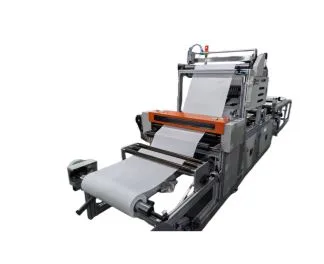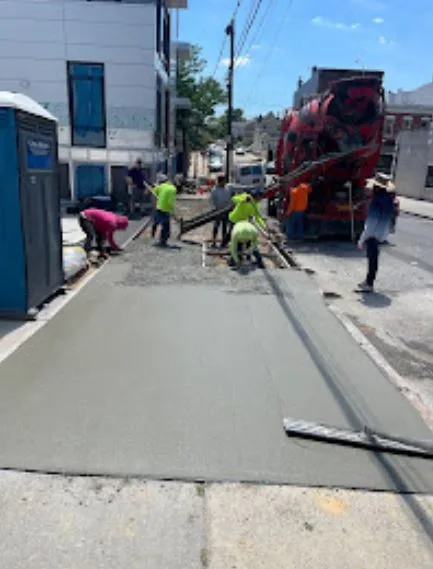How to improve filter seal integrity in an automatic glue injection filter line?
In modern filter manufacturing, seal integrity is critical to product performance, preventing bypass and maintaining filtration efficiency. Automated glue injection filter lines equipped with filter glue dispensers can provide precision and repeatability, but improving seal strength requires attention to process variables, equipment calibration, and material compatibility. This article leverages Dahe Intelligent’s extensive industry experience to explore seven key strategies for enhancing the seal integrity of the automatic glue injection filter line. By optimizing glue formulation, nozzle design, line speed, environmental control, equipment maintenance, quality monitoring, and worker training, you can achieve a strong, leak-proof seal to withstand harsh application environments.
Choosing the Ideal Adhesive Chemistry for automatic glue injection filter line
The foundation of any strong filter seal lies in the adhesive itself. For automatic glue injection filter lines, it is crucial to select a glue with the correct viscosity, open time, and curing characteristics. Silicone adhesives exhibit excellent high-temperature resistance but require longer curing cycles, whereas polyurethane glues offer fast tack and strong adhesion to synthetic media. To improve seal integrity, collaborate with the filter glue applicator supplier to test the adhesive under real-world conditions, including various temperatures, humidity levels, and substrate types.
Shear and peel tests are performed to compare bond strength, with a target of minimum peel strength of 2 N/cm for heavily loaded filters. Converting to a two-component epoxy system may further enhance adhesion, but it requires precise mixing and metering in the glue injection line. Ultimately, selecting an adhesive that is suitable for your filter material composition and operating environment is crucial to achieving uncompromising sealing performance.
Automatic glue injection filter line Nozzles and Application Parameters
Precise glue deposition directly impacts the uniformity of the seal. In an automatic glue injection filter line, ensure that the nozzle design and application parameters match the filter geometry. Fine-gauge tapered nozzles minimize glue bleed and allow for a consistent 1-2 mm bead width at the pleat tip or seam interface. Adjust the dispensing speed and pressure of the glue injection line to maintain a steady flow rate, typically 0.2-0.5 mL per second for most medium-duty filters. Coordinate nozzle motion and conveyor speed with a programmable servo drive to ensure smooth bead formation even at high throughputs. Additionally, an integrated camera-based vision system monitors bead continuity in real time; if gaps or over-application are detected, the software can trigger an automated line pause. By fine-tuning nozzle specifications and application, each filter is guaranteed to receive the exact amount of glue needed for a perfect seal.
Optimize line speed and curing conditions.
Balancing cycle time and seal integrity requires calibrating conveyor speeds and curing phases on automated glue-dispensing filter lines to ensure optimal performance. Running the line too fast can compromise the glue bond before it has fully cured, while running too slowly can reduce production. Start with a baseline speed—say, 10 filters per minute—and adjust in 10% increments while measuring bond strength after cure. Also, control the curing environment: UV-curing adhesives require a constant light intensity of 200–400 mW/cm², while thermosetting adhesives benefit from an oven set to 60–80 °C for 5–10 minutes. Installing a zoned heater or UV module immediately after the glue-dispensing station ensures that the seal reaches the initial set strength before handling. By synchronizing line speed with curing capacity, you can achieve the best balance between production efficiency and a strong filter seal.
Ensure Seal Consistency
Environmental conditions can significantly affect the performance of adhesives. In the automatic glue injection filter lines, maintain humidity between 40% and 60% and temperatures around 20–25 °C to ensure consistent glue viscosity and cure speed. High humidity can cause moisture-sensitive adhesives to gel prematurely, while low temperatures can thicken the glue, leading to underfill or clogging of the nozzle. Implement local climate control around the filter applicator, using dehumidifiers or spot heaters as needed. Equip glue resin reservoirs with temperature regulation to keep the adhesive within its specified viscosity range. In addition, install air curtains at the inlet to minimize dust and debris that can interfere with glue adhesion. By tightly controlling the production environment, you can improve the repeatability of seal quality and reduce batch-to-batch variability.
Automated Glue-Injection Filter Line Maintenance and Calibration Practices
Preventative maintenance is critical to maintaining the seal integrity of automated glue-injection filter lines. Develop a regular schedule to clean glue spray nozzles, replace worn seals on pump heads, and calibrate flow meters. Clogged nozzles or drifting pump pressure can result in under- or over-application of glue, which can cause weak bonds or glue overflow. Use diagnostic tools to verify that the dispensing volume on the glue injection line is within ±5% of the target volume. Also, maintain conveyor bearings and guides to prevent position drift that can cause glue bead misalignment. All maintenance activities and calibrations are recorded in a digital logbook for traceability and quick troubleshooting in the event of a sealing defect. Additionally, through rigorous maintenance, your line can maintain optimal performance and a consistently strong filter seal.
Quality Assurance and Feedback Loops
Combined with rigorous quality inspections, it ensures that sealing failures are detected immediately. On automated glue injection filter lines, implement online leak tests such as pressure decay under vacuum or bubble bleed to verify the integrity of each filter. Supplement with a visual inspection system to verify glue bead position and calculate glue bead cross-sectional area. Use SPC charts to track key sealing indicators (average peel strength, glue bead continuity rate, and leak test pass rate) to alert operators when trends deviate from control limits. Establish feedback loops to use quality data to adjust dispensing parameters or maintenance schedules. Regular root cause analysis of seal defects can reveal systemic issues, leading to continuous process improvement. Meanwhile, embedding quality assurance (QA) into the workflow ensures that every finished filter element meets stringent seal integrity standards.
Achieving a Strong Seal
Improving seal integrity on automated dispensing filter lines requires a multidisciplinary approach that combines the right adhesive chemistry, precise nozzle technology, optimized line speeds, a controlled environment, disciplined maintenance, and proactive quality assurance. Addressing these key factors enables manufacturers to produce leak-proof filters at high volumes.




